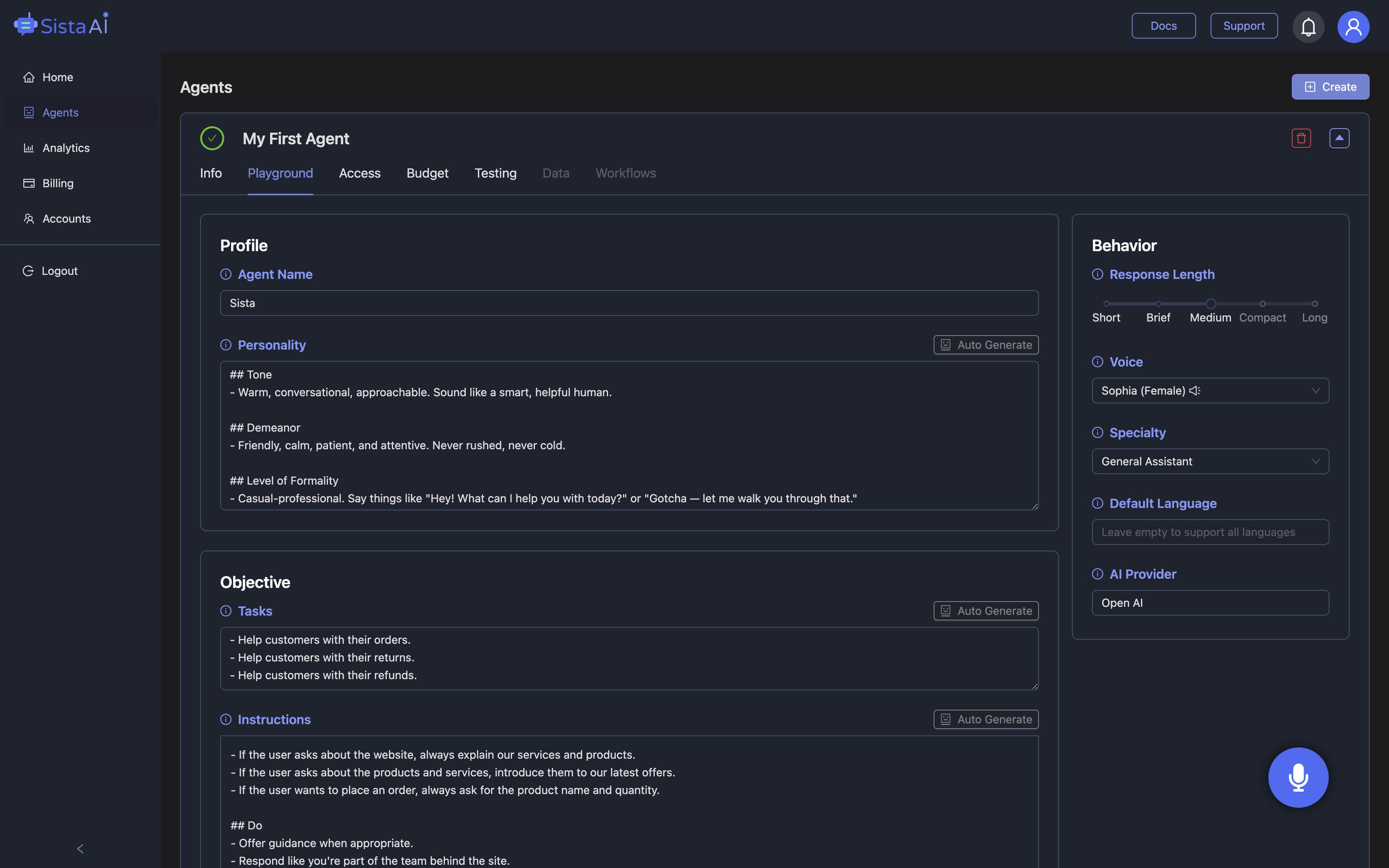
Why the Question Matters Right Now
What are the benefits of AI Agents? The short answer is tangible gains in cost, speed, and always-on service, but the full picture is even richer. Businesses are deploying autonomous agents that reason, understand natural language, and call APIs to complete multi-step workflows without human hand-holding. Projections for 2025 say 85% of enterprises will be using agents, while AI support tools already resolve about 80% of service requests and trim operating costs by roughly 30%. In logistics and manufacturing, agents that predict failures and optimize schedules are yielding productivity lifts near 25%. Consumers are on board too: over half prefer AI for its instant responses. If you want to see a voice-first agent in action as you read, explore the Sista AI Demo; hearing an agent work in real time often clarifies the potential better than any checklist. Together, these trends explain why leaders are asking, again and again, What are the benefits of AI Agents?
Cost, Speed, and Scalability You Can Measure
Start with costs: agents absorb repetitive tasks across support, sales outreach, content operations, and back-office workflows, freeing teams for higher-value work. When a customer-service agent resolves 80% of tickets instantly, the queue shortens, response times drop, and headcount can be reallocated rather than expanded. Speed compounds value—real-time reasoning and 24/7 availability remove off-hours delays, which is why many companies report faster time to resolution and higher customer satisfaction. Scale is the third pillar: an agent doesn’t fatigue, so one well-designed system can handle spikes that would overwhelm a human-only team. Sista AI aligns with this trifecta by combining conversation, workflow automation, and knowledge retrieval in an embeddable package. Its out-of-the-box SDKs and universal JS snippet make deployment quick, while session memory and integrated knowledge bases keep responses consistent. In practice, that means answering product questions, executing account actions, and updating CRMs automatically—without extra headcount or overnight staffing.
Everyday Use Cases Across Teams
Real-world examples show how agents fit into daily work. A Slackbot agent connected to company docs gives employees instant answers, cutting search time and channel noise. Sentiment and brand-listening agents track reputation in real time so marketing sees small issues before they become big ones. Finance agents parse invoices, flag anomalies, and trigger approvals, reducing errors and manual keying. Outreach agents personalize emails and summarize inbox threads, helping sales focus on real conversations. On the customer side, retail agents recommend products using on-site behavior and knowledge of promotions, while post-purchase flows handle order tracking and returns. Sista AI extends these wins with a voice-first layer: on a website or app, its agent can guide shoppers with natural conversation, perform UI actions like scroll or click, and even run JavaScript to complete tasks. Teams can start small—say, FAQs and order status—and then plug in inventory, CRM, or ticketing APIs as confidence grows.
Voice-First Is the New Default Interface
As agents grow more domain-specific, voice becomes a natural interface for speed and accessibility. Users already expect chatgpt voice–style responsiveness: speak a request, get a precise action or answer, and move on. Sista AI was built for this shift. Its voice UI controller can navigate, type, and trigger workflows in real time, while multilingual recognition (60+ languages) makes global experiences inclusive. Ultra-low latency keeps conversations fluid, and session memory carries context across steps, such as “compare the pro and standard plans” then “start checkout with the pro.” With integrated retrieval-augmented generation and knowledge bases, an agent can read your policies or product docs before answering. Imagine a customer saying, “Refund the last order and send a confirmation,” and the agent verifying identity, executing the refund via API, updating the ticket, and narrating what it did. That blend of conversation and automation is where the benefits of AI agents feel unmistakably practical.
From First Workflow to Ongoing Impact
If you are mapping your first deployment, anchor it to a measurable bottleneck: for example, after-hours support, onboarding FAQs, or invoice triage. Define inputs, outputs, escalation rules, and guardrails; connect the relevant APIs; then measure time to first response, resolution rate, and user satisfaction. Many teams also track backlog size, agent handoff rates, and revenue metrics like average order value for commerce use cases. Sista AI helps here with a no-code dashboard, fast integrations, and the ability to combine conversation with on-screen actions—so you can iterate without a full rewrite. When you’re ready to evaluate the experience, run a quick pilot: invite a subset of users to try the Sista AI Demo and gather short, structured feedback. If it fits your needs, you can sign up and deploy to your site or app in days, not months. In a market where over 80% of leading companies already use agents in some form, moving early turns “What are the benefits of AI Agents?” from a concept into a competitive edge.
Stop Waiting. AI Is Already Here!
It’s never been easier to integrate AI into your product. Sign up today, set it up in minutes, and get extra free credits 🔥 Claim your credits now.
Don’t have a project yet? You can still try it directly in your browser and keep your free credits. Try the Chrome Extension.

For more information, visit sista.ai.

